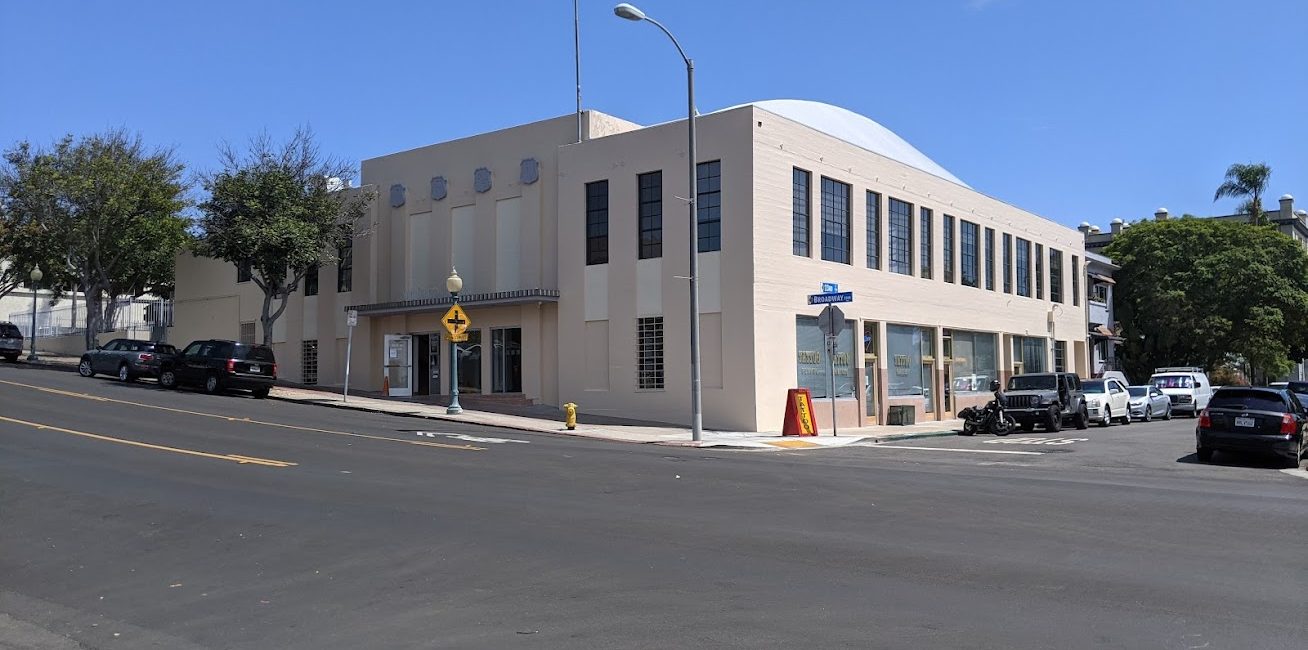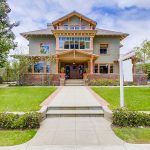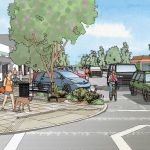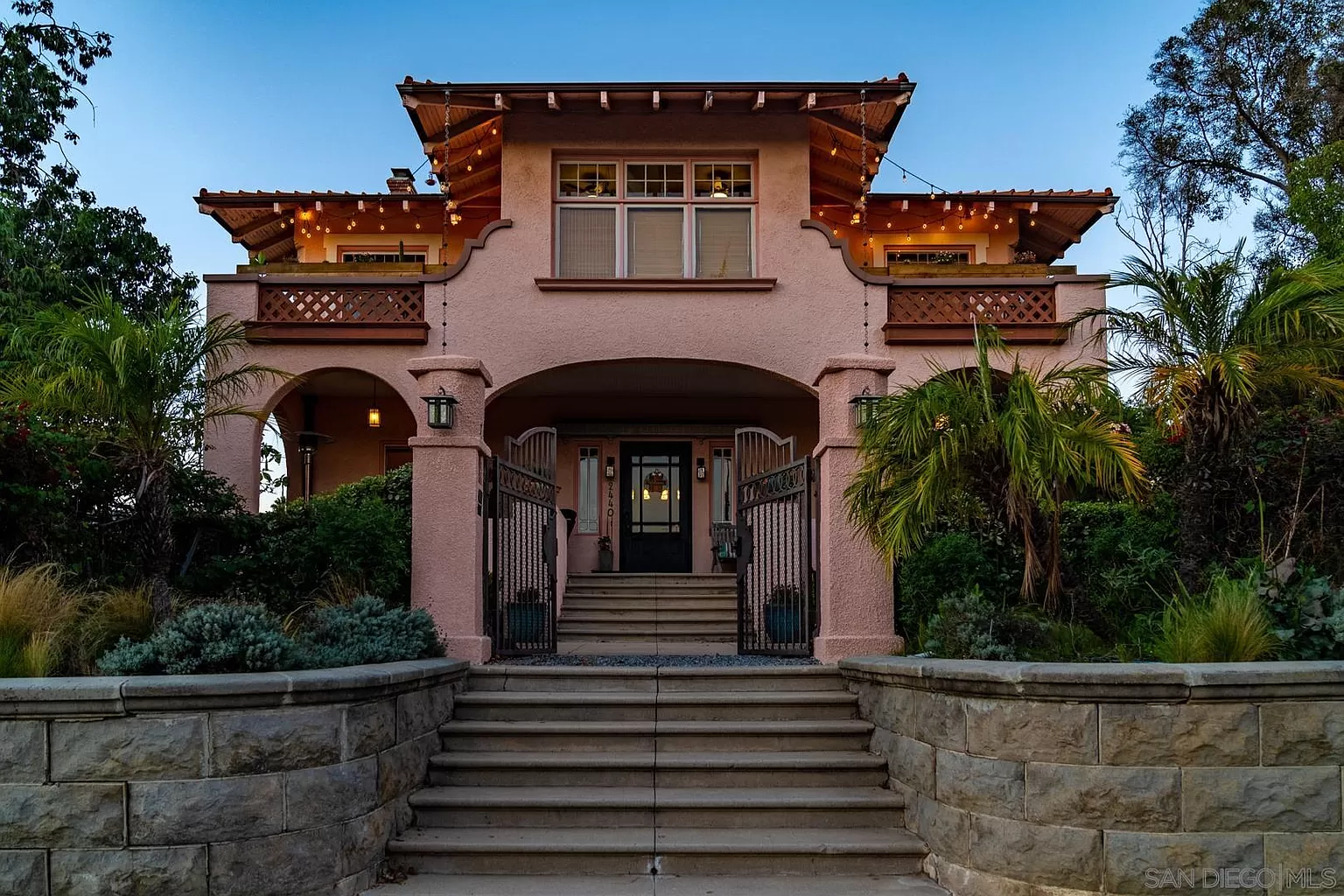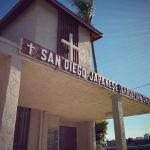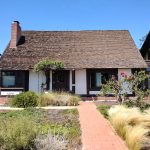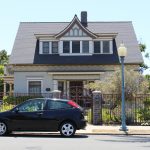
Excerpt from the Golden Hill Community Plan, Historic Preservation Element, approved in 2016.
Although Golden Hill was among San Diego’s most affluent districts by the late 1920s, the community was nonetheless impacted by the onset of the Great Depression. Between the years 1929 and 1932, the national rate of home construction decreased by nearly 80 percent, and in effect the community, which was primarily residential, experienced very little development activity over the course of the 1930s. In addition, Golden Hill began to witness physical decline as early as the Depression era, falling victim to poor maintenance, physical distress and vandalism.
The next wave of activity within the community was touched off by the Second World War, as San Diego emerged as a hub of wartime production and the population grew rapidly at an average rate of 1,500 people per week between 1940 and 1943. The massive influx of war workers strained San Diego’s resources and infrastructure, and the City thereafter experienced a housing shortage unparalleled in its history. In response, the City Council amended the municipal zoning code, so that density would be encouraged in several areas throughout the City, including much of Golden Hill.

Due to the amended zoning code, much of Golden Hill experienced marked physical changes both during and after World War II. Development in the area, especially south of “A” Street, picked up once again during the 1940s and 1950s, but unlike previous years, new construction of this era consisted primarily of moderate-and large-scale apartment complexes. Some of these apartments were sited on vacant parcels, but others replaced many of the neighborhood’s single-family residences. By 1956, a substantial number of homes south of “A” Street had either been subdivided or converted for alternative uses. Undoubtedly the abundance of apartments and rooming houses within Golden Hill brought a sizable number of the working class to the neighborhood. This shift in demography is seen in the increase of several union halls and labor centers.

Whereas central Golden Hill was markedly redeveloped during and after World War II, the northeastern section of the community experienced comparatively little physical change during this time. By the late 1940s, San Diego’s electric streetcars had been decommissioned and their tracks removed or covered, yet in subsequent years South Park retained the form and character of a streetcar suburb. During this period, most of South Park’s homes and businesses remained intact, and little infill development occurred.

During the 1960s and 1970s, Golden Hill witnessed changes in its demographic makeup. The availability of affordable apartments, in conjunction with the exodus of middle and upper class homeowners to the suburbs, meant that the once-exclusive community attracted an increasing number of working class residents, the majority of whom rented rather than owned their homes. In time, central Golden Hill emerged as one of San Diego’s most ethnically and economically diverse neighborhoods. Due to absentee landlords, little maintenance was completed on the neighborhood’s aging structures, and the condition of many structures deteriorated.
Interest in Golden Hill was regenerated in the 1970s, when two national oil crises steered many middle-class professionals back into centralized, inner-city neighborhoods. As homeownership in Golden Hill steadily increased throughout the 1980s, a growing desire emerged among residents to eradicate blight, reduce density and restore the community’s historic character. In 1978, the City’s Historical Resources Board designated the Golden Hill Historic District, a six block area bounded by Balboa Park on the north, 25th Street on the east, F Street on the south, and 24th Street on the west. Following the designation of the district, property owners and community members made a concerted effort to preserve and embrace the heritage and built environment of Golden Hill.
IDENTIFICATION OF RESOURCES
Given that the Planning Area was built out by the 1930s and that mid- century zoning codes encouraged high-density residential development, few if any single family homes were constructed in Golden Hill after the Great Depression. Multifamily housing in the form of apartment buildings were constructed in this period. In addition, large single family homes were converted into multiple units and rented to residents rather than owner occupied. During the pre- and post-war era, the majority of commercial properties included gasoline stations, automotive repair shops and small manufacturing establishments. These buildings generally feature flat roofs and vehicular bays, are between one and two stories tall, and are sited among other commercial developments along former streetcar lines. Most often, they embody a variety of architectural styles, but are ornamentally restrained. A number of institutional buildings, including union halls and auditoriums, were constructed during the pre- and post-war period. Generally constructed between 1945 and 1960, these large buildings were typically one or two stories in height and featured little ornamentation though some reflected Streamline Moderne architecture, such as the American Federation of Labor building at 23rd and Broadway. Often constructed of poured concrete or concrete block, these buildings typically had restrained ornamentation if any, and some were utilitarian in nature. The majority of these buildings appear to be located south of A Street.
A residential property may be significant under this theme for its association with important trends and patterns of development in Golden Hill during the period 1930-1990, including the development of the Federal Housing Administration, which advocated affordable housing design and financed construction; the hosting of the California Pacific International Exposition; the economic recovery and building boom due to the local defense industries in the WWII and post-war periods, especially aircraft manufacturing; the shift from streetcars to the automobile; infill development in established neighborhoods; or the proliferation of inexpensive stucco-box apartment buildings.
A commercial property may be significant under this theme for its association with important trends and patterns of development in Golden Hill during the period 1930-1990, including the hosting of the California Pacific International Exposition; the economic recovery and building boom in the WWII and post-War periods due to the local defense industries, especially aircraft manufacturing; or the development of commercial automobile corridors. An institutional property may be significant under this theme for its association with important trends and patterns of development in Golden Hill during the period 1930-1990, including the establishment of early social halls and auditoriums. Any property type may also be significant as a good or rare example of a popular architectural style from the period, such as Art Deco, Streamline Moderne, Late Moderne, Minimal Traditional, or Modern.

